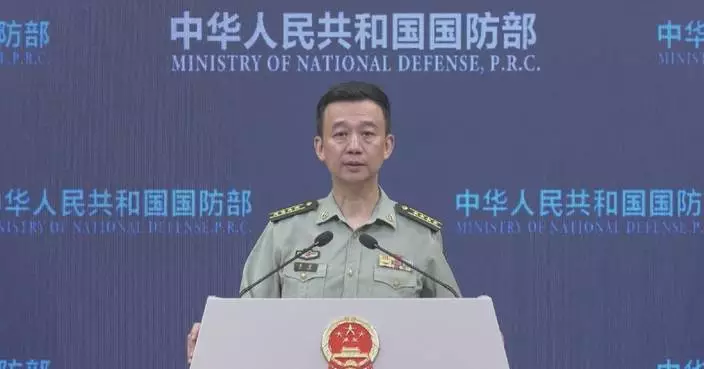China's pursuit of greener development has not only enhanced its own energy landscape but also provided substantial benefits to the global community in advancing green development and addressing climate change, said a China Media Group (CMG) commentary published on Friday.
An edited English-language version of the commentary is as follows:
A Chinese electric vehicle transport ship recently embarked on its return journey from Germany after delivering thousands of electric vehicles to Spain, the United Kingdom, the Netherlands, and Germany, meeting the increasing demand in those markets. According to the Chinese automakers, six to seven more roll-on/roll-off ships will be deployed over the next three years to further facilitate the export of Chinese green products, which is also expected to support the growth of the new energy industry in these destinations.
This is one of the snapshots of how China's high-quality production capacity benefits the world. On Thursday, China released a white paper titled "China's Energy Transition," showcasing a wealth of data and vivid examples that highlight the achievements of the country's energy transition over the past decade, as well as its significant contributions to global green development and a clean and beautiful world.
As the world grapples with common challenges such as energy security and climate change, it is also presented with opportunities for accelerated green and low-carbon energy development.
As the world's largest energy producer and consumer, China has been actively pursuing the philosophy of green development and propelling the growth of clean energy into high gear. Over the past decade, more than half of the increase in electricity consumption in China has come from new clean energy sources. The country has accounted for over 40 percent of the world's annual new renewable energy capacity installations, and it has reduced energy consumption per unit of GDP by more than 26 percent. According to the International Energy Agency's 2023 report on renewable energy, China is a world leader in the renewable energy sector and a crucial driver of rapid, large-scale growth in this field.
China's energy sector is becoming greener and greener, enhancing global supply, lowering the costs associated with energy transition, and playing a crucial role in global green development and climate change initiatives.
China is currently the largest renewable energy market and manufacturing hub. The high-quality, efficient, and cost-effective new energy products made in China provide consumers around the globe with more options and help ease inflationary pressures. Data show that from 2014 to 2023, the share of non-fossil fuel energy consumption globally rose from 13.6 percent to 18.5 percent, with China contributing 45.2 percent of this increase. The International Renewable Energy Agency noted that the average cost of wind and solar power generation has dropped by more than 60 percent and 80 percent, respectively, over the past decade, largely due to China's efforts.
Meanwhile, China's continuous efforts to promote high-standard opening-up have also been creating new opportunities for international cooperation in clean energy. Recent investments from multinational companies like General Electric and Siemens in China's energy sector reflect this trend. Projects such as Electricite De France's offshore wind initiative, Tesla's electric vehicle manufacturing facility in Shanghai, and LG Energy Solution's battery project in east China's Nanjing City have all been launched in China. The country is actively promoting the liberalization and facilitation of energy trade and investment, making it easier for foreign companies to benefit from China's energy transition, which also supports global green and low-carbon development.
Moreover, as the world's largest developing country, China has pledged to achieve carbon peak and carbon neutrality in the shortest timeframe in history. It also continues to support global emission reduction and promote sustainable energy development worldwide. In 2023 alone, China's export of wind and solar products helped other countries reduce carbon dioxide emissions by approximately 810 million tons. Analysts suggest that China has become a "ballast" in the global fight against climate change.
The reasons behind China's success in this arena are multifaceted. Continuous technological innovation, complete industrial supply chains, robust market competition, and a vast domestic market have enabled China to accelerate its renewable energy developments while promoting global energy transitions.
A spokesperson from Contemporary Amperex Technology (CATL), a leading Chinese battery manufacturer, stated that innovation is their core competitive advantage, emphasizing the role of technological opening-up in driving global energy transition and accelerating the response to climate change.
Through its development, China has demonstrated that the world does not need green barriers, but rather collaborative efforts to advance the green transition. The nation's push for energy transformation is not merely a response to external pressures; it is a proactive choice that aligns with global energy trends, meets the demands of high-quality development, and reflects a sense of responsibility as a major power.
Looking ahead, as China continues its high-quality development journey, the green component of its energy landscape will undoubtedly increase, injecting more Chinese momentum into global green development and climate change mitigation efforts.

China's energy transition contributes to global green development: commentary









